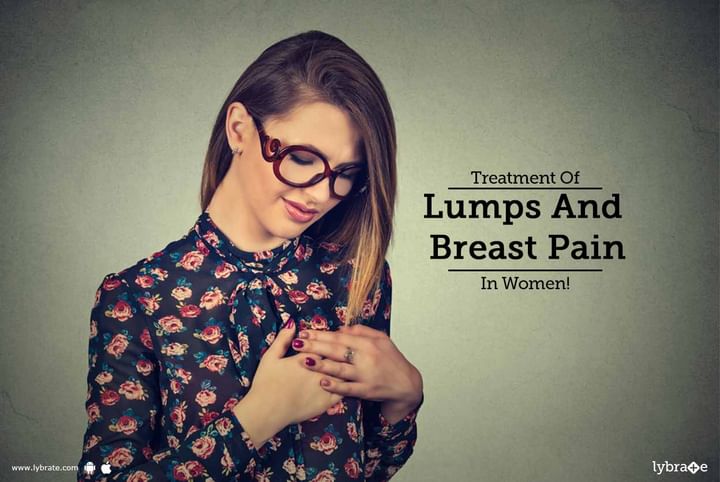Treatment Of Lumps And Breast Pain In Women!
What are the causes of lump in the breast?
Infections, injuries, benign growth (noncancerous growths), and cancer are the commonest cause of breast pain and lumps. Pain may also be caused by various medications, such as digitalis preparations, methyldopa, spironolactone, aldactone, diuretics, anadrol, and chlorpromazine. The other common cause is hormonal change during puberty, before and during menstruation, around menopause, during pregnancy (especially) in the first trimester, and during breastfeeding.
How to treat the pain associated with it?
The treatment includes medical treatment, auxiliary mode of treatment, and surgical treatment. Medical treatment includes the following medication:
- Hormonal preparations, such as oral contraceptives and progesterone supplements, or hormone replacement therapy have been extensively used for the medical treatment of breast pain and lumps.
- Some powerful drugs are available, but they may have severe adverse effects, such as weight gain, heavy periods, muscle cramps, deepening of the voice, increased body hair, acne, bleeding between periods, changes in voice, lowering of libido, reduced breast size, fatigue, depression, and headaches.
- Drugs which can be used include Danazol (a modified testosterone) and bromocriptine (a dopamine agonist).
- Antibiotics are used along with nonsteroidal anti-inflammatory drugs to relieve the pain associated with the infection.
- Local application of painkillers in the form of lotions and gels can be used to relieve the pain, but it is contraindicated in pregnant or breastfeeding women. Supplements that may help include vitamin E, soy supplements, and chaste berry. Vitamin E affects hormones that govern breast growth, such as estrogen, which triggers the proliferation of cells that make up breast glandular tissue.
Surgical treatment includes following things:
- Surgery is not done to treat breast pain unless it is associated with a breast lump.
- Surgical removal of the lump in cancerous and benign conditions is the most widely used method of treatment.
- In cases of pain associated with breast cancer, surgical removal of lump and breast tissues (total mammectomy) is always indicated.
- An abscess of the breast often needs to be drained by a doctor because antibiotics alone cannot adequately treat an abscess.
Auxiliary treatment includes:
- Use of a well-fitting supportive bra will help reduce movement and pain associated with it.
- Applying heating pads or ice packs can minimize the pain associated with inflammation.
- A warm bath may also help reduce pain.
- Breast massage with oil or diluted essential oils, such as fish oil and flaxseed oil, helps dissolve fibroadenomas.
- Dietary changes and supplement use may also help reduce the pain. It includes reduction of caffeine, salt intake, a low-fat diet, and reducing excessive dairy products as they promote the production of estrogen, which is associated with breast tenderness.
In case you have a concern or query you can always consult an expert & get answers to your questions!



+1.svg)
